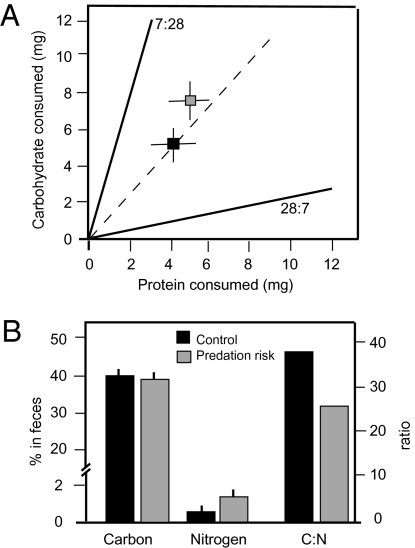Fig. 1.
Grasshopper nutrient intake and excretion during feeding trials with artificial diets. The experiment was conducted to discern the dietary response of grasshoppers to predation risk. (A) Grasshoppers were presented diets with either 7% protein and 28% digestible carbohydrate or 28% protein and 7% digestible carbohydrate. The solid lines represent intake rails (the balance of nutrients contained in diets) that define the boundaries of the nutritional space for all potential nutrient intake (55). The dashed line represents the nutrient intake target revealed by grasshoppers feeding on the two different diets. In the absence of predation risk, grasshoppers preferred a diet with 1:1 ratio of protein and carbohydrate intake rather than a diet matching their body elemental ratio. Grasshoppers facing risk consumed slightly higher amounts of dietary N than control grasshoppers, and consumed much greater dietary C. (B) Grasshoppers in the feeding trials excreted similar levels of C, reflecting higher respiration of C in risk conditions than in control conditions. Consequently, excess N intake in risk conditions is released in the feces. This result leads to differences in fecal C:N content between risk and control conditions. Values are mean ± SE.

